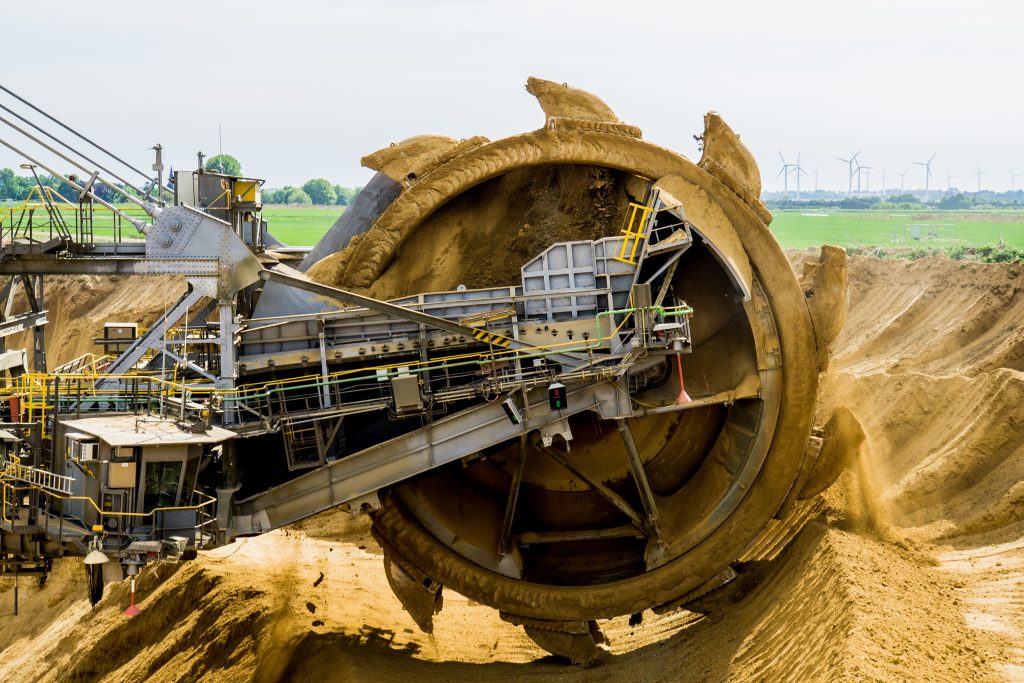
Occupational health and safety (OHS) management is a top priority for Australian companies of all sizes and in all sectors. Reporting serious incidents is a legal obligation, and reducing workers’ risks is an ethical, moral and legal prerogative for all organisations. That why more companies than ever before are actively looking at ways to improve their own occupational health and safety management system, or to implement one if they have no current provisions in place.
Occupational health and safety (OHS) management systems vary widely between companies. Some businesses take an entirely paper-based approach with clipboards and files, while other firms invest in occupational health and safety management software to ensure that they have the best provisions possible. As occupational health and safety management provisions vary so widely between different companies, comparing them can be a challenge.
OHS management is a process of continual improvement and refinement. Even businesses with strong reputations for good occupational health and safety (OHS) management practices are constantly improving what they do. So how do you know that your organization has the very best system possible?
One approach is to judge any occupational health and safety (OHS) management based on its key components.
So what are they?
In this post, we’ll explore the 8 key components of occupational health and safety (OHS) management systems.
They are:
- Planning
- Incident reporting
- User-friendly interface
- Training
- Risk assessments
- Certification
- Convenience
- Performance
1. Planning
The first key component of any occupational health and safety (OHS) management system is planning. Whether you use a paper-based ‘Safety Statement’ or dedicated occupational health and safety (OHS) management software, planning should be front and centre of everything you do.
Planning is essential if you want to ensure that your organization stays abreast of all current Australian occupational health and safety rules and regulations.
This includes things like:
- Planning how to prevent accidents and illnesses
- Planning for practices, resources, and procedures for your OHS policy.
- Planning when to review your OHS policy
Planning should be a key component of every OHS management system because it gives offers a clear overview of associated OHS costs and helps you manage risks with confidence.
2. Incident reporting
The second key component of occupational health and safety management systems is incident reporting.
An OHS system should be accessible to all members of an organization, from senior management down to junior employees, so that they can report incidents in a timely manner.
Most commonly, organizations use paper-based reporting forms such as incident forms. However, many firms are increasingly turning to cloud-based software, where all documents and files are stored remotely on servers.
With cloud-based software, employees can use any internet-enabled device (desktop, mobile, iOS, or Android) to create, save and access their organization’s OHS documents.
Incident reporting means that employees can:
- Report accidents and injuries.
- Report hazards and risks.
- Receive reminders to complete certain tasks
- Review completed risks, hazards and incident forms (if they have permission).
Incident reporting also helps senior management and key stakeholders, too.
At the highest levels, incident reporting helps in the following ways:
- Notify stakeholders about reported accidents, incidents and injuries.
- Generate reports from the filed incident and risk reports.
- Communicate directly with staff to delegate duties and responsibilities.
- Review training received by staff.
- Ensure compliance and improve consistency across multiple premises.
- Streamline and standardize OHS practices.
- Determine cost-effective solutions.
That’s why incident reporting is the second key component of OHS management systems.
3. User-friendly interface
The third key component of occupational health and safety management systems is that they have a clear, user-friendly interface.
An ‘Interface’ is any way that an end-user (such as an employee) interacts with a system or software. It could be through a computer screen or just the layout of a form they need to complete, such as an incident reporting form.
Even if you have an entirely paper-based approach to occupational health and safety management, with paper incident report forms, you still need to think about how user-friendly the form is.
You might ask questions such as:
- Can employees easily understand what’s required?
- Are the instructions clear and unambiguous?
- Have the employees been trained to use the form?
Having a user-friendly interface is important for every type of occupational health and safety management system, but it’s especially important if you’re using or planning to invest in occupational health and safety management system software.
With a software-based occupational health and safety management system, the interface needs to be clear, simple and intuitive so that staff members have no problems interacting with it every time they access it.
Whether they access it via a web browser or through an app, the interface should help them do whatever they need to.
Key tasks include:
- Creating incident reports
- Conducting a risk assessment (safety walkthrough)
- Viewing stored documents
- Viewing employee OHS training records (likely for managers).
User-friendly should be a key component of any decent Occupational health and safety management system.
4. Training
The fourth key component of any occupational health and safety management system is training. Without training, your organization’s OHS system won’t run smoothly, no matter how much you invest in OHS software.
Poorly trained staff can put an organization at risk; they may miss dangers, fail to report incidents and even act in ways that endanger themselves, their colleague or the general public.
Well-trained employees, on the other hand, know exactly how to use their organization’s OHS system and become part of their organization’s OHS processes.
They become an asset to their organization and can help make their workplace safer and more secure.
At a basic level, all staff members should be trained to use whichever system their organization has in place.
They should know how to:
- Create incident report forms
- Save or file the completed forms
- Implement actionable tasks (assigned by managers)
- Configure the software to suit their personal preferences (if using OHS management software)
Training helps ensure that all staff members know exactly how to perform basic duties such as creating and submitting incident reports if they witness an accident. Depending on the processes you have in place, this may mean hand-writing a form and submitting it to a supervisor, or it may mean accessing software through a desktop or mobile device and then creating a submitting a form through the software.
Good staff training will help increase staff engagement levels and this will greatly support an organizations’ ability to meet its OHS goals.
However, training is also important for managers and key stakeholders. Senior staff should know how to do things like:
- Create reports
- Analyse data
- Conduct trend analysis
Reports help organizations use data to understand the cause of incidents, their frequency, and their associated costs. This gives key stakeholders the data necessary to reduce the chance of repeat incidents occurring. This helps an organization create a safe workspace for its staff and manage risks with a greater degree of confidence.
5. Risk assessments
The fifth key component of occupational health and safety management systems is risk assessments. This means that the system should help the organization’s senior management conduct risk assessments and decide on an appropriate course of action.
Risk assessments entail far more manual work for staff if the organization uses a paper-based OHS system. For companies that use occupational health and safety management system software, much of this work is automated.
For example:
Management can view all hazards, risk, incidents and injury reports as they are filed in real-time. The software then processes this data and creates reports that can be used to create a risk assessment or develop a further course of action.
This dramatically reduces the time that staff members need to spend on admin and can increase the accuracy of the reports.
For example, with root cause analysis, the software may identify that a number of accidents are occurring in a certain section of an organization’s premises. The software will then alert management to conduct risk assessments of this area and prompt them to carry out regular safety checks.
The software helps managers to classify and manage incidents across their entire business and apply cost-efficient strategies that help manage and minimize workplace risk.
6. Certification
The sixth key component of any occupational health and safety management system is certification. The system should be certified by a trusted third party to ensure that it is fit for purpose.
Having a strong occupational health and safety management system helps an organization build confidence among its staff and customers.
To validate what they are doing, some organizations apply for certifications such as the AS/NZS 4801 and/or OHSAS 18001 certifications.
Certifications show staff and the public that an organization is committed to workplace safety. It helps prove that you are setting up, or improving, your procedures for managing your occupational health and safety risks.
Having a formal certification can offer a whole host of knock-on benefits such as improved staff retention, consumer confidence, and greater productivity. Ultimately, this helps boost an organization’s bottom line.
7. Communication
The seventh key component of OHS management systems is communication. The system must help staff communicate with each other and help the organization foster communication.
Why is communication critical?
- Employees must be kept up-to-date with their tasks.
- They must be able to communicate and share information with their colleagues and managers.
- Key stakeholders must be able to communicate with managers and staff to help them follow their vision for the company.
But communication helps in other ways, too.
With good communication, staff can be made aware of any changes made to any document or file.
8. Data accessibility
The eighth key component of OHS management systems is data accessibility. Every OHS system generates significant amounts of data and the goal of the management system should be to share and make use of that.
For companies using a paper-based OHS management system, data accessibility could be as simple as knowing which filing cabinet incident reports are stored so that staff can find them when required.
For medium-sized and large firms, especially those with multiple premises, data accessibility can become more challenging. That’s why many make the shift to cloud-based OHS management software.
Digitizing OHS documents helps companies create what’s known as a ‘connected processes’ model. This makes data accessibility a breeze as any member of an organization can access documents from the cloud instead of having to search for paper documents. The connected processes model means that the software can address an organization’s OHS management needs by having different pieces of data talk to each other.
So, how does this work?
Let’s say that an employee creates and files an incident report. In a company using a paper-based approach, the onus would be on the staff to notify senior management. With a cloud-based software approach, all relevant managers and stakeholders would be immediately notified.
Conclusion
Now that you’ve seen the 8 key components of occupational health and management systems you’ll be well placed to consider which solution best meets the needs of your organization.
There’s no single ‘best’ solution for every business as each organization has its own unique needs and requirements.
Whatever stage of the process you are at, whether you currently have now OHS management system in place and are looking to start, or you already have one and are looking to shift from a paper-based system to an electronic one, the system you arrive at should contain the 8 key components we discussed above.
Contact us today to find out how Beakon software can help your organization achieve its goals for a safe and secure workplace.
Related posts:
10 Benefits of Occupational Health and Safety Management Systems
How to Choose the Right Health and Safety App for Your Organisation






